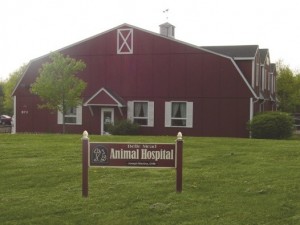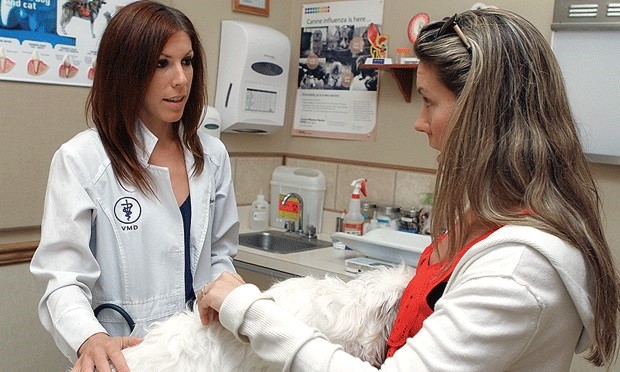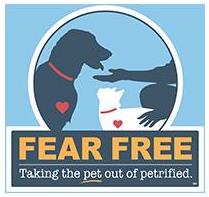 January 2017 – Canine Influenza Virus
January 2017 – Canine Influenza Virus
Canine influenza (Flu) is commonly referred to as dog flu. Canine influenza is highly contagious among dogs. In fact, unless a dog has already had the illness and recovered, almost every dog exposed to the virus will become infected.
Two strains of canine influenza have been identified. Canine influenza virus H3N8 was first reported in 2003, and canine influenza virus H3N2 emerged in March 2015. Because these viruses are relatively new, dogs have no natural immunity to the viruses and should be vaccinated against both strains. Thankfully for dogs, there is one vaccine that protects against both flu strains. Please make sure your vet has the Bivalent Vaccine so that your pet gets fewer shots with the best protection.

In New Jersey, New York, and Pennsylvania there have been multiple cases of the flu right now in January 2017 – the same devastating flu that hurt so many dogs and owners in Chicago. Recently in our very local area of Hillsborough and Bridgewater, there have been many other canine upper respiratory cases and some pneumonias. Owners need to be aware that if their dog has a respiratory disease, then they are more likely to get the flu, which can be really serious.
Again, the great news is that we can protect dogs with a flu shot. The vaccine protects against the two canine influenza flu types mentioned above, and the vaccine can save dogs from pneumonia and death. Puppies as young as seven weeks can be vaccinated because it is so safe and effective. There are only two types of dog flus that are of concern as opposed to humans where there are different strains every year. Therefore, human flu vaccines are formulated with a bit of guesswork and can vary from year to year on their effectiveness. In dogs, we can vaccinate with confidence and know the vaccine is both safe and in the greater than 90% protective.
We recommend all dogs be vaccinated because there are dogs that only carry the disease and never show symptoms. Some healthy looking dogs playing with other dogs may spread the active virus for weeks to months, quietly infecting other dogs without anyone knowing it. If most dogs were vaccinated, they would protect each other through herd health. If vaccinated and still infected, the longest they would be contagious and spreading the virus is three days. It is really critical, especially if you have other pets in your home or your pets have pals. This is the safest and best way to protect your pet and his or her community of friends.

How does the canine influenza virus transmit?
The canine influenza virus can pass from dog to dog through virus particles in the air (that is through coughing or sneezing) or by coming into physical contact with other dogs (touching noses). It can also be picked up if a dog touches or plays with objects that were touched by infected dogs (food bowls, toys). Humans can even transfer the virus between dogs on clothes and shoes. For example, they may spread the virus if they touch an infected dog, or even touch a toy or a doorknob that the dog has made contact with, and then touch another dog before washing their hands.

What are the symptoms and treatment of canine influenza? Yes, Flu usually equals Fever!
A normal temperature for a dog is 100-102.5 degrees Fahrenheit. Common signs are fever, lethargy, decreased appetite, cough and runny nose. Most dogs start with what may appear as a mild form of your run of the mill respiratory infection of which there are many we cannot test for. However, if the infection involves either of the two canine flus, watch out! Many dogs will develop pneumonia and have a more serious disease course that requires hospitalization. Ten percent of dogs may die even with 24 hour specialty care in an isolation unit at a referral specialty center. Greyhounds have a much worse prognosis and higher rate of death.
If your dog has any of these signs, consult your veterinarian for a proper diagnosis. Your veterinarian can collect nasal swab samples in the animal hospital or in your car to determine if the infection is likely to be canine influenza. Please inform the call center or receptionist booking your appointment about your dog coughing or showing respiratory signs so that we can protect the hospital and other pets from being infected.
The veterinarian might collect blood samples when you first take your dog in for an exam, and again in two or three weeks. It might take two weeks for the results to return. In the meantime, your veterinarian can start appropriate treatment to make your dog more comfortable. At this time, there is no treatment specifically for canine viral infections. Therefore, it is important to seek veterinary care at the first signs of respiratory infection in your dog because early treatment can result in better outcomes.
It is also critical to call any and all of your friends and all businesses that your dog has visited in the prior two weeks. For example, call doggie day cares, dog parks, kennels, groomers, pet stores, and veterinarians. It’s just an extra phone call or two, but is the nicest thing you can do to help protect other pets!!!! Good Karma!
Belle Mead Animal Hospital, Your Other Family Doctors
Handling Every Pet with Love Every Day!
LIKE us on Facebook and Follow us on Twitter @BMAH121, Pinterest and Google+ for news and pet wellness tips. We’re also on YouTube! Subscribe for updates!









